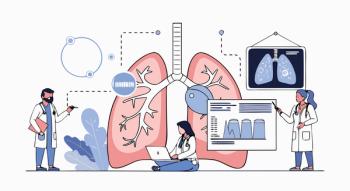
Ten ways the FDA is addressing the opioid epidemic
Scott Winiecki, MD, of the FDA Center for Drug Evaluation and Research, shares how the FDA is working to address the opioid epidemic.
At
“We are taking action,” said Winiecki. “Don’t think we are sitting idly by.”
Specifically, Winiecki pointed to the FDA Opioid Action Plan and Safe Use Initiative.
Here are 10 more specific steps the FDA is taking to address the opioid epidemic:
1. Supporting efforts to improve/expand PDMPs. The FDA has supported the
2. Funding projects associated with the Safe Use Initiative. Currently, there are
3. Expanding use of advisory committees before approving new drug applications for opioids that do not have abuse-deterrent properties. These committees seek to increase input from outside the agency, said Winiecki, noting that a common criticism against the FDA is that it is too isolated.
4. Requiring post-market safety studies aimed at getting a better sense of the long-term safety and long-term risk of opioids.
5. Reassessing the risk-benefit approval framework for opioid use. Winiecki stressed that the risk/benefit information now needs to take in the “public health” perspective of opioids. “I think that does change the bar of the risk/benefit analysis in terms of approving opioids because everyone should appreciate how serious this issue is and how prevalent this issue is,” he said.
6. Increasing the number of prescribers who participate in Risk Evaluation and Mitigation Strategy Programs. The goal is to ensure providers receive adequate training on pain management and safe prescribing. “Education eliminates the, ‘I wasn’t aware of,’ or ‘I didn’t know,’ or ‘I trained a long time ago’ excuse,’” said Winiecki
7. Encouraging innovation in and approval of abuse-deterrent formulations. Abuse-deterrent formulations are part of the answer to addressing the epidemic, but not the answer, said Winiecki. A medication can be “abuse deterrent but it’s not abuse proof,” he said.
8. Developing label changes (warnings and safety information) for immediate release opioids.
9. Supporting better treatment, such as through exploring naloxone availability and access.
10. Taking additional actions. Warning letters regarding misleading ads, scientific workshops, public hearings, and working more closely with the national association of boards of pharmacy, are among them.
Newsletter
Get the latest industry news, event updates, and more from Managed healthcare Executive.



















































